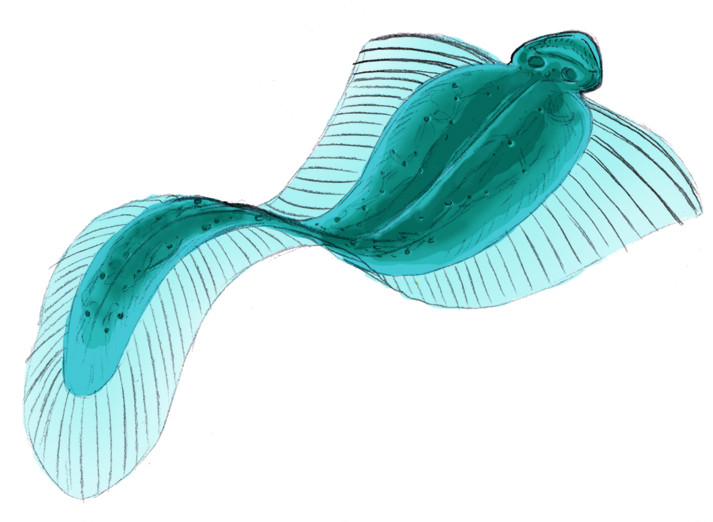HOME | DD
 Amoeba-like-thingy — Winged worm
Amoeba-like-thingy — Winged worm

Published: 2008-11-02 23:29:54 +0000 UTC; Views: 3007; Favourites: 36; Downloads: 0
Redirect to original
Description
Another creature evolved from: [link]Its 'wings' can move a little and help it change direction. It moves by rippling its body in an 'S' shape. The spines holding the membrane together can move where they join to the body.
Another of the largest animals on the planet. They look like tiny wriggling flecks of dust in the water easily without the aid of a microscope. Its size in particular helps it keep afloat with movement minimized to a light ripple to save energy.
It lives beneath the bubble algae chomping bits off the raft when it needs to. It uses bacteria in its intestine to help it break down the cellulose in the plant material it consumes. It uses channels in its body to guide excess waste and gases made during digestion to pores in its skin.
Related content
Comments: 10

I would really like some decendents of this guy
👍: 0 ⏩: 0

Its actually at the front, facing away from us at this angle. If you were looking at it from the side its mouth would look like this: <
Its chemical sensory cells are on the upper part, its light sensory organs right on top of its head. There is a hole on the underside of its head for discarding excess water / materials it can't eat.
👍: 0 ⏩: 0

Are any of these animals eutelic (i.e, do they have a consistant and genetically encoded number of cells)?
👍: 0 ⏩: 1

I am no biologist, so this was a new term to me. Just looked up what it means more in depth.
You know, I really don't know. I don't know the pros and cons of having a set number of cells. I always imagined repair and growth happening in these animals through cell division, not cell growth, including the starting species they're all derived from, but simply because I'd never heard of eutely.
Something made them able to survive over the other multicellular animals during the recent mass extinction (extreme heating and rise in radiation levels globally). Now I'm thinking what effect eutely could have had, and if non-eutelic animals would have had any advantages or disadvantages over eutelic animals... maybe they are eutelic, since creatures that had to grow by cell division had a greater incidence of cancers and died (because of mistakes in copying its cells)?
To be honest, I wouldn't mind hearing other people's thoughts on this... 

👍: 0 ⏩: 1

I'm not sure what advantages eutely has, but it definitely has some correlation to good survivorship; tardigrades, nematodes, and rotifers are all eutelic, and they are among the best survivors on the planet, so maybe this is the case with your New Phylum worms.
👍: 0 ⏩: 1

Perhaps so. I'll try looking up on it some more.
👍: 0 ⏩: 0




























